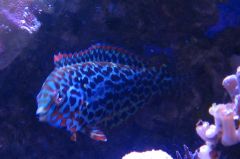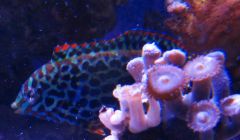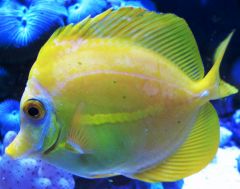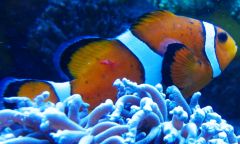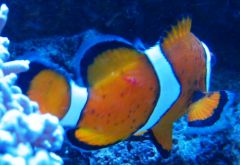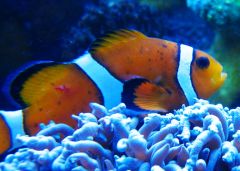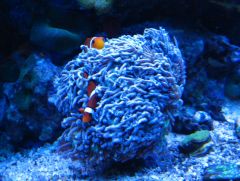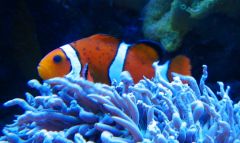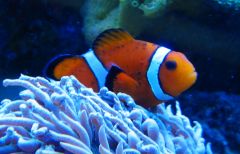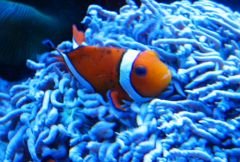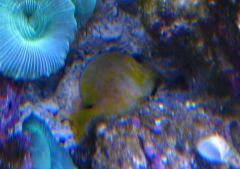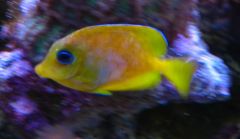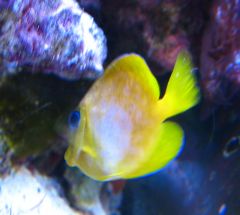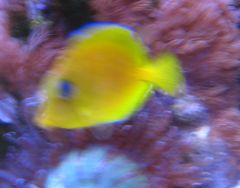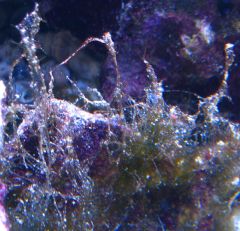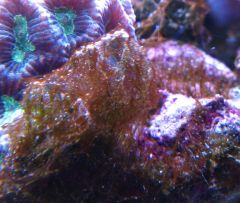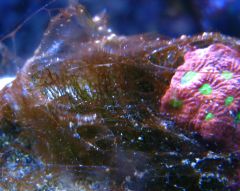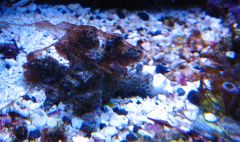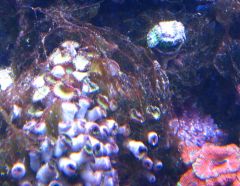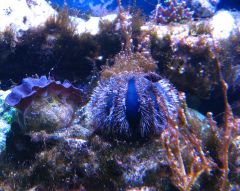-
Posts
1,821 -
Joined
-
Last visited
Content Type
Profiles
Forums
Gallery
Events
Store
Everything posted by LCDRDATA
-
I just saw this; I'll need to go back and think about where things went, but I did finally get this stabilized and cleaned up.
-
Pretty much solid, as far as I can tell. Well, that's disappointing.
-
I've had a pair of lemon chromis in my cube for a year or so now, and in the last few weeks they've turned black (or at least very dark). No recent changes to the tank - parameters, configuration, occupants, etc. - that I can think of to explain it. They're active and eating well, I haven't noticed any behavior changes, they've just changed color. Any ideas what's going on? Thanks!
-
-
When I used to run into them years ago in Hawaii, the conventional wisdom recommended a paste of meat tenderizer -- it seemed to work.
-
In my experience, Mexican (vice zebra) turbos will eat GHA, although the speed/amount varies by individual snail (i.e. it seems that some like it a lot more than others).
-
She's Alive!! Not the greatest quality, but good enough for this purpose.
-
From the album: Data's DT
Slightly different shot of new leopard wrasse first day out© James N. Dart
-
-
OK, it sounds like I'm well within the "too early to worry about it" window - which I suspected but wanted to be sure about. Thanks all!
-
On Saturday I introduced my new leopard wrasse (female) into my tank. She perched under my hammer coral for about a minute and a half and then dove under the sand bed. I haven't seen her since. We had a leopard wrasse in the past, so I know they bury themselves to sleep or when they are stressed. My question (hence the subject of the thread) is when should I get worried? - i.e., how long is too long? I know pretty much where she went in -- although there's obviously no guarantee she's still in the same place -- and I suppose I could probe around, but I don't want to just add to the stress level. The tank is covered (I know they can be jumpers), and there's no sign she's managed to carpet surf, so I'm assuming she's still OK and in the tank. When do I start seriously questioning that assumption?
-

Can I Remove the Center Braces on this 110G
LCDRDATA replied to XxTech MoneyxX's topic in General Discussion
I had a similar problem with my new sump for my 75 gallon DT. What I ended up doing was removing the front center brace (it was attached with pocket screws), putting the sump in place, and then putting the center brace back. Yes, it was a royal pain to do, but it was doable, and working in the sump around the brace isn't too bad. Is that something that would work for you? -
Interestingly enough, I saw a selection (not a huge variety, but a couple of colors in a couple of sizes) at the local Home Depot a week or so ago.
-
To clarify, I was running the carbon as the top layer in the reactor, with a layer of Seachem Phosguard -- a white pelleted resin, NOT GFO -- beneath it, and at a low flow rate to minimize any tumbling. However, I think this time around I ended up with a lower-quality carbon as well, and between that and the apparent reality I should probably pull the carbon out of my reactor. I looked over the abstract/"layman's" version of the study you referenced, and the experimental design (and results) seemed fairly rigorous. Hopefully once I pull it the problem should clear up (at least in terms of limiting further damage) quickly, as I'm skimming well and running a pair of 200 micron filter socks. If I choose to run carbon again, I'll stick to something like the BRS Rox. As far as diet goes, I'm feeding half a sheet of purple seaweed daily, along with New Life Spectrum THERA +A pellets and homemade frozen comprised mostly of blended tail-on organic shrimp, silversides, green nori, and Kent Marine Chromaplex. It's only after I started feeding this frozen (after finally running out of Jan's ) that my clowns started laying eggs, so at the risk of invoking a post hoc fallacy, I think I'm doing something right food-wise in the tank at large, anyway.
-
I am running a combination (layered) of carbon and phosguard in a small reactor, but not at a flow rate that there is significant tumbling. Do you think I should pull the carbon? Any other treatment suggestions?
-
One thing you don't want to do is get into a see-saw of large, rapid pH swings. I don't think the temperature would make such a huge difference. I'd make sure your DT powerheads are causing some surface disturbance (for gas exchange), and it shouldn't hurt to add an airstone or two. As far as the sump is concerned, I think you would be safe adding a small amount of vinegar -- that's the safest organic acid I can think of -- to bring the pH down. Just do it a little at a time, make sure there's been full mixing/circulation, and then test. After that, then start your circulation once the pH is equalized between DT and sump. Only then do you want to work on gradually bringing the whole-system pH to whatever end value you want. In the future, you might want to have some kind of buffered product (I personally use and like Kent Marine's Superbuffer dKH, but there are others as well) on hand to help even out this kind of a swing. It keeps my pH more or less right at 8.3. Good luck!
-
OK, it's been longer than I intended, but here are two shots of the fish I just took, plus one from not quite two years ago. I'm thinking (and not in a positive way) HLLE? Agree/disagree/any recommendations?
-
-
-
-
-
I've also been seriously thinking about that ORA whitespot filefish, so will be watching eagerly for updates!
-
I believe Jan used to get her St. Thomas mushrooms here when she did her group buys. I don't remember them having the spectacular colors that start off this thread, but there was a variety, and the price ($12, if memory serves) was certainly hard to beat.
-
My daughter was a bit older than yours when I got my main tank (at the behest of herself and my wife); however, I'd suggest the following as a few of her favorites: - cleaner goby, esp. sharp-nosed (G. evilinae) - yellow clown goby (G. okinawae) - "scooter blenny" / ocellated dragonet - she named ours "puff" because of the puffs of sand coming out of his gills as he fed. Make sure to get one that accepts prepared foods, as the size setup you're describing likely won't sustain a large enough pod population, particularly when new - skunk cleaner or fire shrimp - good-sized brittle/serpent star - nassarius snails as part of CUC (she used to love watching them "erupt" from the sand bed at feeding time) - pulsing xenia - while it may take some effort to keep under control, the constant self-generated movement never ceased to be entertaining - frogspawn, hammer, duncan, or other "tentacled" LPS You could probably maintain any/all of these together in tank the size you're contemplating. Good luck, and keep us posted!
-
More or less ... I did some searching and found the thread that discusses this.



